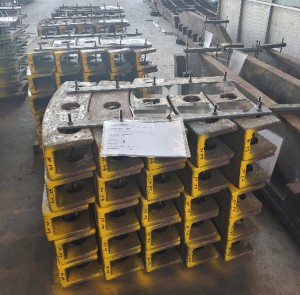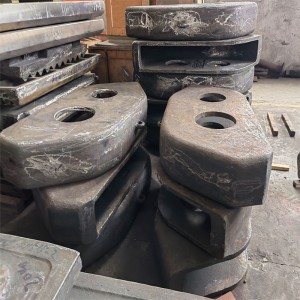In the operation system of the crusher, the end cover may seem insignificant, but it plays the role of a “safety guard” with its precise sealing design. It acts as the “goalkeeper” of the equipment. Through ingenious structural and detailed design, it prevents material leakage and isolates the spread of dust, building an invisible defense line for the stable operation of the crusher. Only by understanding the sealing philosophy of the end cover can we better play its core role in equipment safety.
The core responsibility of the “gatekeeper” of the end cover lies in blocking the path of material leakage. When the crusher is in operation, the internal materials are prone to splashing or leakage under high-speed impact and compression. The end cover forms the first physical barrier by closely adhering to the main body of the equipment. Its sealing surface has been precisely processed and fits tightly with the equipment port, preventing fine particles from overflowing through the gaps. The edge sealing groove design can accommodate the sealing parts, further enhancing the fit. Even in the face of material impact under high-pressure conditions, it can firmly lock the internal medium, preventing material leakage from polluting the environment or causing wear to the surrounding components of the equipment. This “active defense” design concept makes the end cover a key node for controlling the flow of materials.

The coordinated application of dynamic sealing and static sealing is the practical wisdom of end cover sealing. Static sealing is used at the part where the end cover is fixedly connected to the equipment. It relies on the elastic deformation of the sealing element to fill the gap and forms a stable sealing pressure through the uniform tightening of bolts. It is suitable for areas without relative movement and pursues long-term sealing stability. Dynamic sealing is used in the areas adjacent to the end cover and rotating parts. It needs to adapt to certain relative movements. The sealing components are usually made of wear-resistant and friction-resistant materials, maintaining a close contact with the contact surface during movement. This not only reduces frictional losses but also prevents material leakage from the movement gap. The two sealing methods each have their own focuses and jointly form a comprehensive sealing system for the end cover.
Temperature variation is an invisible variable that affects the sealing effect. The design of the end cover needs to have an “elastic mindset” to cope with temperature differences. When the crusher is in operation, internal friction generates heat, and fluctuations in environmental temperature can also cause thermal expansion and contraction of equipment components. If the sealing design of the end cover neglects this change, it is easy to have problems such as loose sealing surfaces or accelerated aging of sealing parts. High-quality end covers will be made of materials with strong thermal stability, and the sealing parts will be made of elastic materials with temperature adaptability. They maintain toughness at high temperatures and avoid hardening at low temperatures, ensuring that the sealing pressure remains stable throughout temperature changes and that the sealing effect is not affected by environmental fluctuations.
The standardized process of rapid maintenance is the daily guarantee for maintaining the sealing effect. During routine inspections, it is necessary to pay close attention to whether there is any material residue, scratches or deformation on the sealing surface of the end cover. If cracks, hardening or other signs of aging are found on the sealing parts, they should be replaced in a timely manner. When cleaning the sealing surface, soft tools should be used to avoid scratching the precisely machined bonding surface. When reinstalling the end cover, it is necessary to ensure that the tightening force of the bolts is uniform to prevent uneven local force from causing poor adhesion of the sealing surface. These simple yet standardized steps can promptly identify potential sealing hazards and prevent minor issues from evolving into major leaks.
The control of the time nodes for preventive maintenance reflects the forward-looking nature of sealing management. The service life of the end cover seal is closely related to the operating time of the equipment and the characteristics of the material. The maintenance cycle should be determined according to the working conditions: For crushers processing high-hardness and high-wear materials, the replacement interval of the seal should be shortened. For equipment that operates continuously for a long time, it is necessary to proactively check the sealing condition after a certain period of operation, rather than waiting for leakage to occur before dealing with it. By predicting the aging rhythm of the sealing parts in advance and completing maintenance before the performance declines, not only can the downtime losses caused by sudden leakage be avoided, but also the overall service life of the end cover can be extended.

The sealing philosophy of the end cover is essentially a safety mindset of “preventing trouble before it happens”. It blocks risks through structural design, ADAPTS to the environment with material properties, and maintains performance through standardized maintenance, ensuring that every detail serves the core goal of “zero leakage”. It is precisely this ultimate pursuit of sealing that makes the end cover an indispensable “invisible guardian” in the safe operation of the crusher.
Post time: Aug-21-2025
